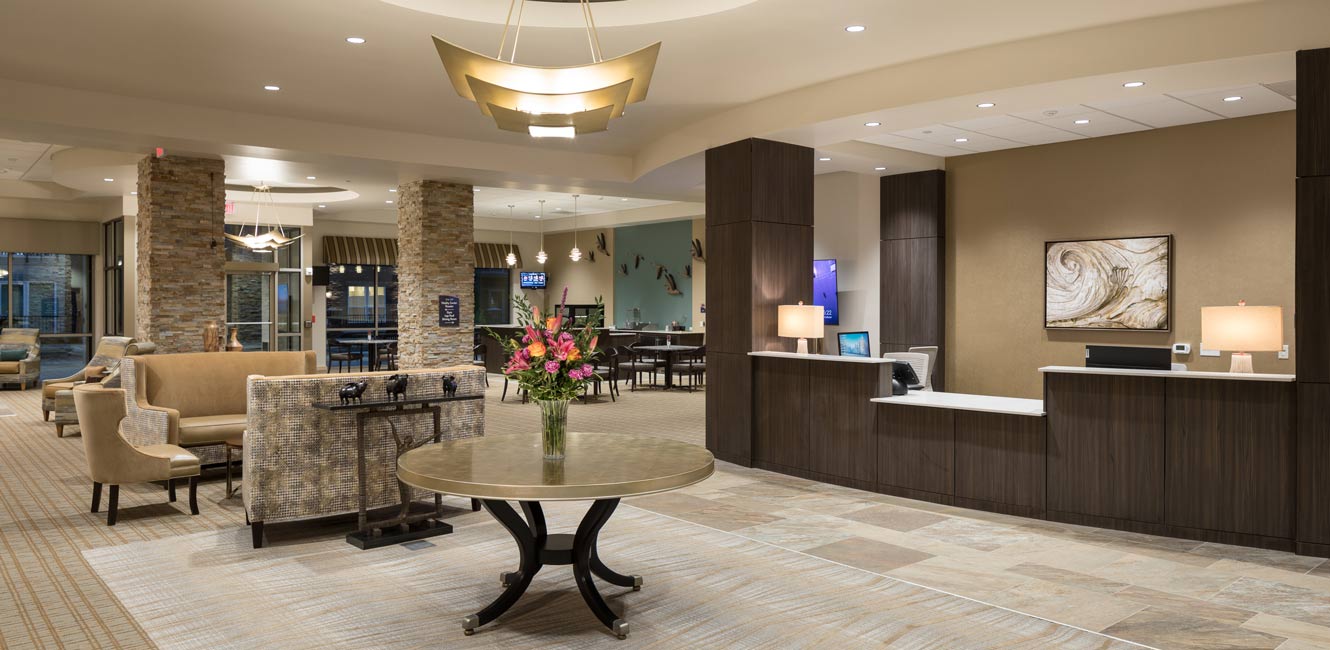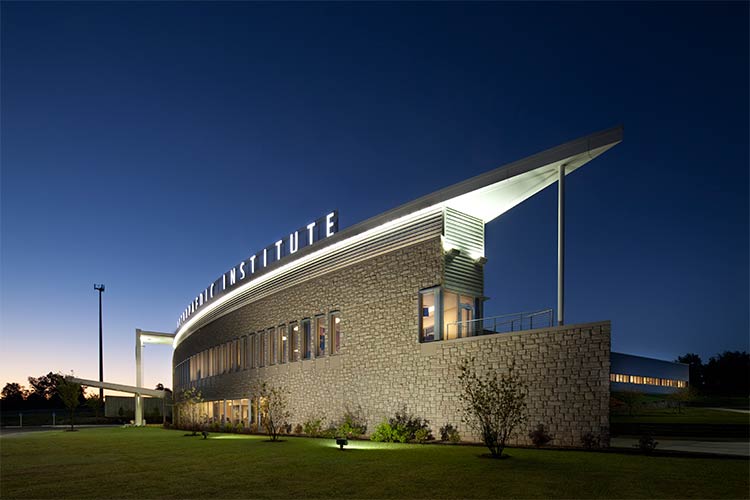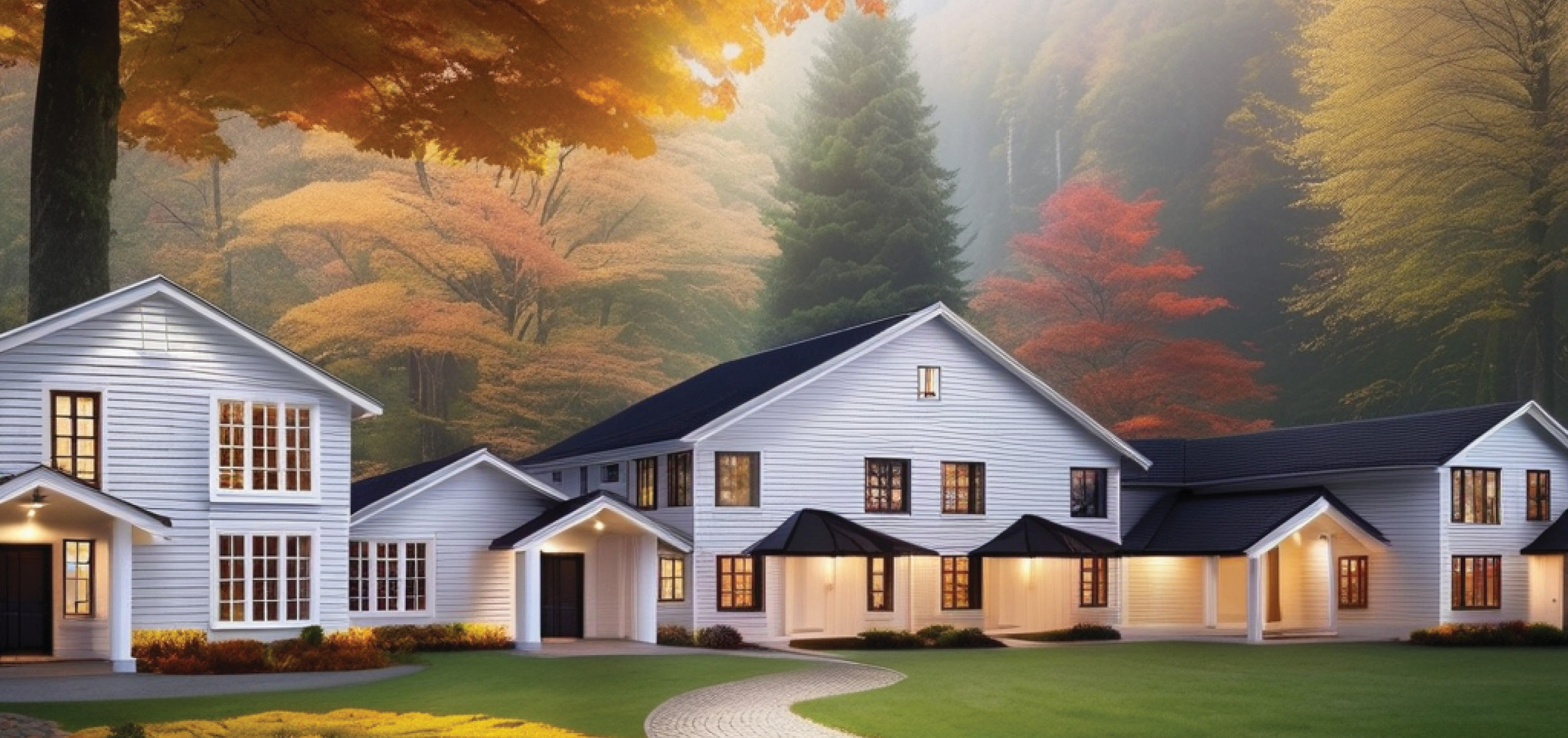The Hospitality World Today
After a slow, steady recovery from historically low occupancy levels during the Great Recession in 2009 (Lock, 2020), the hospitality industry has once again sustained a major blow. This time, it is the result of the coronavirus pandemic (AHLA, 2020). According to CBRE data provider Kalibri Labs, “the number of room nights occupied in U.S. hotels during the second quarter [of 2020] was 60 percent less than a year earlier. With such a dramatic decline in demand, the national occupancy level for the quarter was just 28.3 percent. It is estimated that 15 percent of U.S. hotels were forced to close for some portion of the three-month period” (CBRE, 2020). The current outlook for a recovery in this sector is still quite gloomy (Krishnan et al., 2020). Hotel Association of Los Angeles executive director Heather Rozman was recently quoted in a Los Angeles Times article saying that, “We anticipate many hotels won’t survive. Industry data shows 1 in 4 properties already are struggling to pay mortgages, risking foreclosure” (Martin, 2020).
It has been said that “one person’s loss is another person’s gain.” The hospitality world today is no exception. While the hospitality industry is suffering, the senior living industry can seize an opportunity. Although the pandemic has caused a short-term disruption in occupancy and product absorption due to freezing admissions and pandemic concerns, the demographic trend clearly bodes well for the future of the seniors housing and care markets. Interest among aging Boomers in traditional age-segregated communities is not what it was for earlier generations of older adults. Recent years have seen a heightened focus on addressing a growing demand for more affordable or so-called “middle market” products. There also has been an increase in popularity of walkable urban neighborhoods and intergenerational retirement opportunities.
The rapidly escalating inventory of distressed hospitality properties coming on the market suddenly provides a tremendous opportunity for adaptive reuse to satisfy many desirable attributes like those noted earlier for new senior living developments (i.e. affordability, variety, socialization, and proximity). Moreover, given the substantial overlap in terms of form and function, the magnitude of the investment required to convert a hotel into a senior living community can be relatively modest compared to the potential return.
The senior living industry can seize an opportunity.
Although the pandemic has caused a short-term disruption in occupancy and product absorption due to freezing admissions and pandemic concerns, the demographic trend clearly bodes well for the future of the seniors housing and care markets.

Similarities Between Hospitality and Senior Living
In general, hotels are like senior living communities. For example, both:
- Are intended to accommodate a significant number of unrelated individuals housed in private or semi-private quarters (including sanitary facilities and occasionally limited food preparation facilities)
- Have nonresident staff onsite full or part time to manage the facility and see to the needs of inhabitants during their stays (this often includes the provision of one or more daily meals, although full commercial food preparation facilities are not always present)
- Typically feature a variety of common amenity spaces for occupants to use and enjoy
In some cases, these examples may represent the extent of the similarities between hospitality and senior living facilities. However, other instances suggest otherwise. As there can be a greater overlap between each building type, it depends on the purpose and character of the original structure (e.g. resort or extended stay) and its intended future use.
Evaluation Criteria
Considering the state of hospitality and growing senior living market, plus similarities between the facilities in these two industries, there are five factors to consider when evaluating the adaptive reuse of a hotel property. Such criteria warrant a thorough analysis to decide if such a facility will be a good fit for your next senior living community.
LOCATION
There is no point in doing a project if you cannot lease it up. Once a redevelopment opportunity presents itself, it is essential to conduct a thorough and objective market analysis. This will ensure that there is enough demand and an adequate supply of age- and income-qualified prospects in the surrounding area. Even a seemingly ideal property with all the right features and amenities can be a poor investment if it is in a market that is already saturated with senior living options.
Other factors related to location include:
- Visibility and road access
- Proximity to services and amenities (especially those that are healthcare related)
- Parcel size (to provide adequate outdoor areas and room for future expansion)
Additionally, zoning is important. For example, a site zoned for a hospitality use will not necessarily be permitted to be redeveloped as assisted living and memory care. Check with local authorities having jurisdiction to see if a special use permit, a planned development, or rezoning will be required.
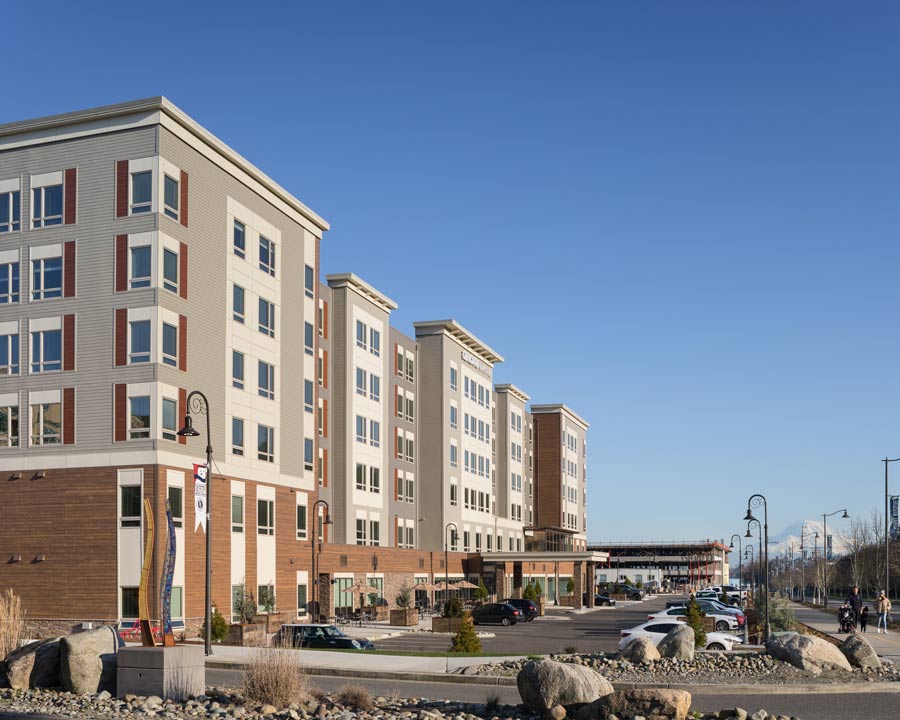
PHYSICAL PLANT AND STRUCTURE
Assuming a hotel property is promising from a site and market-demand standpoint, an architectural and engineering assessment of its physical plant will be the next step. Certain criteria should be reviewed:
- How old is the building?
- How much deferred maintenance needs to be addressed?
- What is the remaining useful life of the electrical system, HVAC equipment, water heaters, and roof?
- Does the building have an emergency generator? If not, will one be required?
- Is the building fully sprinklered? If not, will a fire protection system need to be added or modified?
- Where are structural elements such as columns, beams, and bearing walls located?
- Will such building features need to be altered to accommodate your building program?
- How well do the existing guestrooms lend themselves to being converted into resident apartments, either individually or by combining rooms, without having to relocate demising walls?
CODE COMPLIANCE
Of critical importance is the matter of ensuring compliance with applicable building codes and regulations. Much will depend on whether or not the proposed use is licensed by the state where the property is located. While rules vary widely from one to the next, all states have some form of required licensure in place for assisted living and memory care, but typically not for independent living or active adult facilities. If the proposed conversion is to one of these latter two categories, the developer has more latitude in terms of regulatory requirements. However, if the goal is to get the building licensed as assisted living and/or memory care, there will be more hoops to jump through.
Most U.S. jurisdictions enforce some version of the International Building Code and subsidiary codes, with or without state or local amendments. Many states have also adopted some edition of the NFPA 101: Life Safety Code and/or FGI’s Guidelines for the Design and Construction of Residential Health, Care, and Support Facilities. Both apply to licensed senior living communities, but typically not to hospitality facilities.
It is essential to also be aware of the applicable codes enforced in both state and local jurisdictions, as well as the implications they may have for the proposed repurposing. While work involving existing buildings is typically governed by the International Existing Building Code, a change in occupancy classification from a hotel to independent or assisted living may trigger compliance with certain requirements of the current codes for new construction. These may be considerably more stringent than what was in effect at the time the building was first constructed for hospitality use.
Accessibility
A key area of regulatory concern that can have a major impact on the feasibility of converting an existing structure is the matter of accessibility. Besides the Americans with Disabilities Act (ADA), most areas have additional accessible design requirements. This may include the ICC A117.1 – Accessible and Usable Buildings and Facilities standard or other state-mandated regulations. In many respects, these are different for senior living than for hospitality. Independent living and active adult projects may also be subject to the Fair Housing Act’s Accessibility Guidelines, which do not apply to hospitality. While renovations of existing properties might be grandfathered in certain cases, adaptive reuse that entails a change in occupancy can mean some or all aspects of a repurposed facility should meet current codes. For example, it can be difficult and costly to remodel former guest bathrooms into accessible resident toilet rooms, especially for older properties.
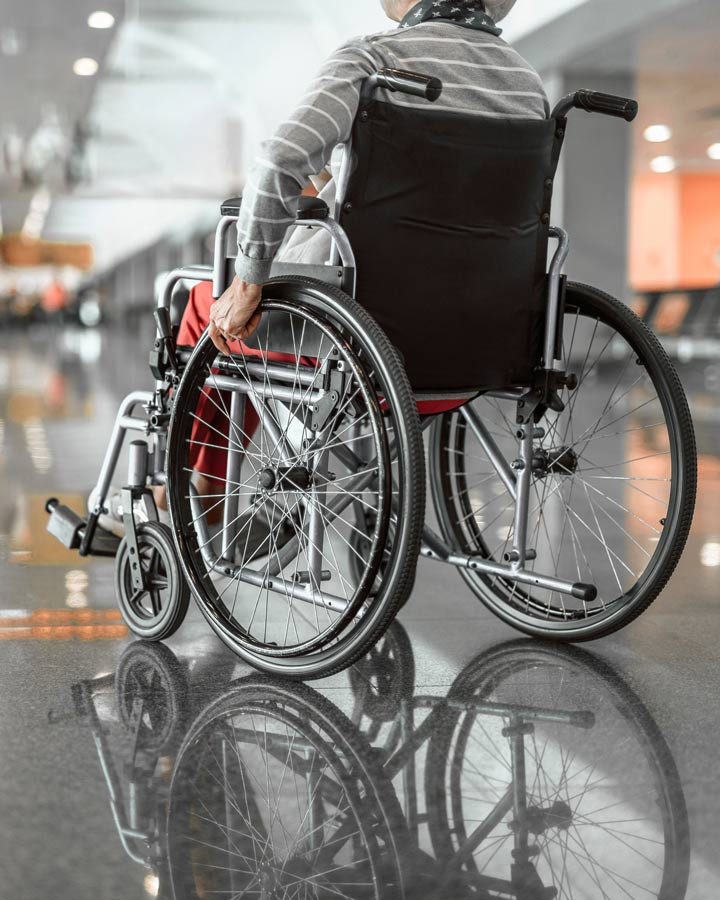
Available Space and Programming
The greater the alignment between the available square footage in an existing hotel and the conceptual program for a new senior living community, the better the fit. If a program significantly exceeds the existing building area, ask yourself:
- Is there enough space in the building and on the site in the right location for an adaptive reuse project?
- Does the budget support the added construction cost? Conversely, if the available square footage exceeds the programmatic requirements, can the additional area be allocated for revenue-generating uses? If so, this can help justify additional expenses.
Assuming the current footprint is sufficient, next determine how the existing facility’s layout would align with your proposed programming. Begin by comparing the desired unit mix and sizes stated in the financial pro forma to the floor plans of the existing hotel building. In doing so, consider these questions:
- Are the sizes of existing guest rooms sufficient to serve as studio apartments, or can they be combined into one- or two-bedroom apartments without requiring the relocation of demising or load-bearing walls?
- Are plumbing chases near proposed locations for new bathrooms and kitchens?
- Are mechanical shafts large enough and suitably located?
- Is vertical circulation large enough and suitably located? Besides simply meeting current code requirements, are stairs and elevators sufficiently sized for the needs of the future building population?
Next, survey the quantity and layout of:
- Common areas and amenity spaces
- Areas for staff, support, and back-of-house functions
As noted earlier, a structure that was built as a limited-service hotel may not have a full commercial kitchen to serve the anticipated dietary requirements and culinary expectations of seniors. Likewise, consider whether there is enough space for dining, activity, and other gathering space for residents.
Finally, consider whether existing amenities (e.g., an indoor pool, if deemed unnecessary for the target population) can be repurposed for other uses, such as a dining room, activity room, or movie theater.
ERDMAN Takeaway
In today’s uncharted development landscape, the prospect of repurposing underperforming hospitality assets into senior living communities has become a very real and compelling proposition. To accomplish this transformation successfully requires some homework. If you consider the five key factors outlined here, as well as ask the right questions, you’ll be well positioned to acquire a property that best supports your desired goals for a future senior living community.
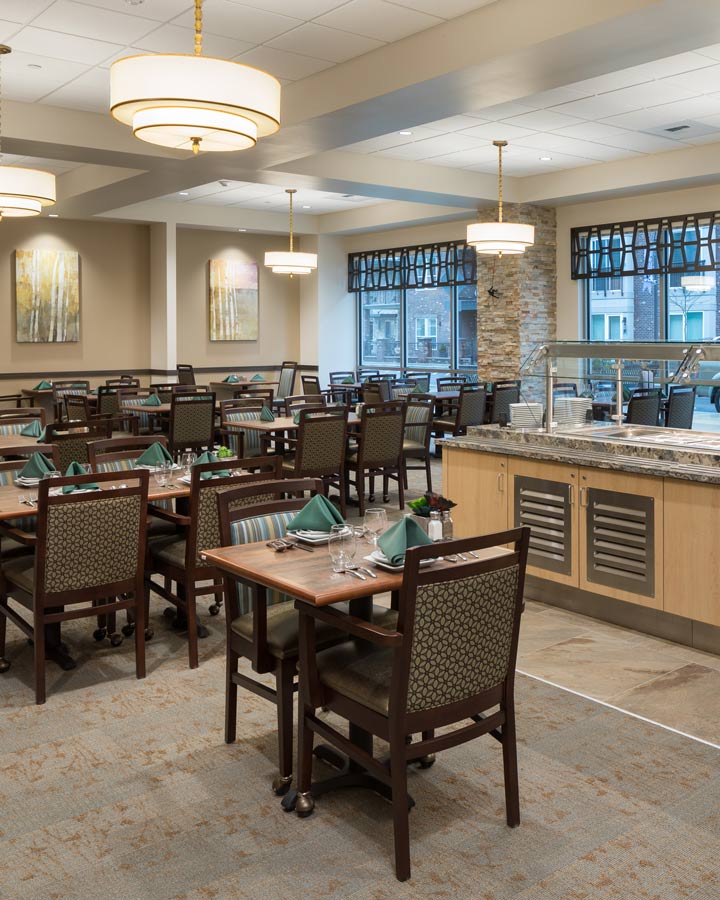
- AHLA. (2020, August 31). State of the Hotel Industry Analysis: Covid-19 Six Months Later. Retrieved from https://www.ahla.com/sites/default/files/State%20of%20the%20Industry.pdf
- CBRE. (2020, August 31). After Depressed Second Quarter, CBRE Projects U.S. Lodging Sector Recovery Path. Retrieved from https://www.cbrehotels.com/en/about-us/press-center/after-depressed-second-quarter-cbre-projects-us-lodging-sector-recovery-path
- Krishnan, V., Mann, R., Seitzman, N., & Wittkamp, N. (2020, June 10). Hospitality and COVID-19: How long until ‘no vacancy’ for US hotels? Retrieved from https://www.mckinsey.com/industries/travel-logistics-and-infrastructure/our-insights/hospitality-and-covid-19-how-long-until-no-vacancy-for-us-hotels
- Lock, S. (2020, October 5). Occupancy rate of the U.S. hotel industry 2001-2019. Retrieved from https://www.statista.com/statistics/200161/us-annual-accomodation-andlodging-occupancy-rate/
- Martin, H. (2020, September 19). ‘Tsunami’ of hotel closures is coming, experts warn. Los Angeles Times. Retrieved from https://www.latimes.com/business/story/2020-09-19/hotels-out-of-business-covid-pandemic
